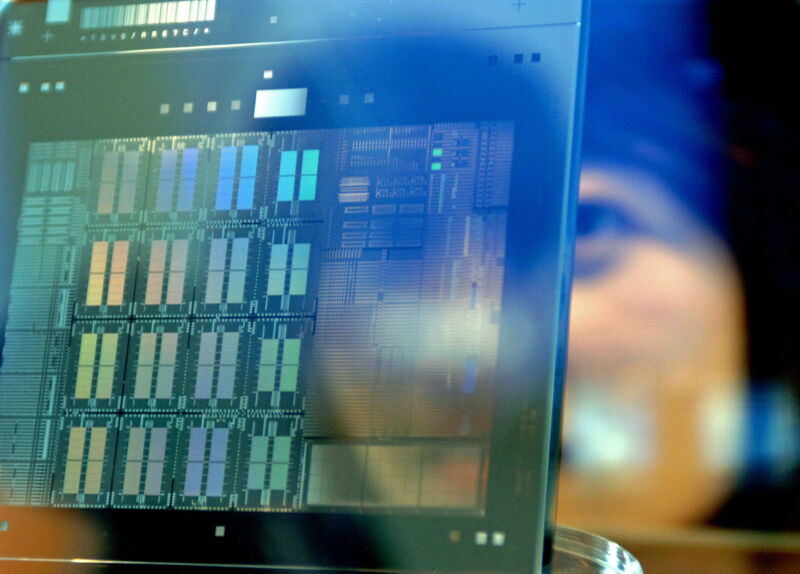
Enlarge / A woman examines a mask—a part used in wafer conception—at a show room of the United Microelectronics Corp (UMC) factory in Tainan, southern Taiwan.
Earlier this year, the chip shortage seemed like it might ease sometime in 2022. Now, that forecast appears to have been optimistic.
“The shortages are going to continue indefinitely,” Brandon Kulik, head of Deloitte’s semiconductor industry practice, told Ars. “Maybe that doesn’t mean 10 years, but certainly we’re not talking about quarters. We’re talking about years.”
It is becoming clear that snarls in the semiconductor supply chain are weighing on economic growth. Yesterday, both GM and Ford said that missing chips led to slashed profits for the third quarter, and Apple is rumored to be cutting this year’s production targets for its iPhone lineup, the company’s cash cow. Chip woes have become so widespread that a division of Wells Fargo thinks the pressures will curtail US GDP growth by 0.7 percent.
No easy fix
As with many thorny problems, the causes of the chip shortage are myriad, and none of them has a quick fix.
For one, people keep buying new phones, tablets, and laptops, and they continue to use network-heavy services like video streaming, video conferencing, and more, which increases data-center use. “Demand just keeps continuing to grow in general across nearly all markets,” Kulik said.
That appetite has collided head-on with a variety of supply shortages. Recently, substrates that make up printed circuit boards have become scarce. Compared with advanced semiconductors, PCBs are relatively low-margin and easy to manufacture. Most chip companies don’t make their own, but without PCBs, semiconductors can’t talk to other chips in a computer. The companies that do make the boards don’t make a lot of profit that they can reinvest in expanding production.
Making matters worse, a fire at major substrate factory in July 2020 took a significant source offline. As a result, PCB factory capacity is expected to lag demand in the coming years. The crunch has become so acute that Intel CEO Pat Gelsinger brought it up on his company’s most recent earnings call.
Even the world’s richest semiconductor manufacturers are swamped, and they’re a long way away from being able to meet demand. New fabs take years to build and optimize, and companies are hesitant to invest if they think surges in demand will be temporary. While demand is up, whether or not it will persist beyond the pandemic is unclear. Companies are loath to invest in a new fab if there’s a strong possibility that it won’t be running 70 percent of the time. Fabs are just too expensive.
“If you’re running at 60 or 70 percent utilization, you’re probably losing money,” Robert Maire, president of Semiconductor Advisors, told Ars.
Leading-edge fabs cost around $5 billion–$10 billion, multiple times what they cost a decade or two ago. As manufacturing techniques have advanced, the buildings themselves get more costly to construct, and the machines that make the chips have grown more expensive. The latest tools use extreme ultraviolet lithography, which is required to produce chips with features smaller than 7 nm, and they sell for upward of $120 million.

